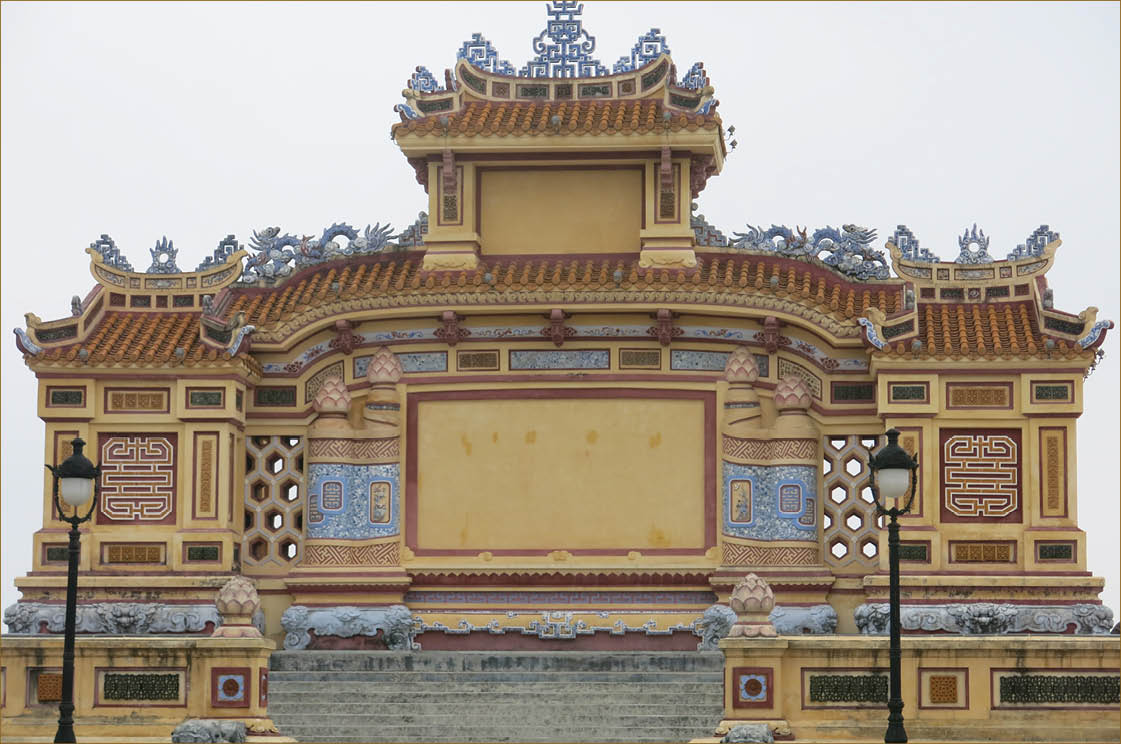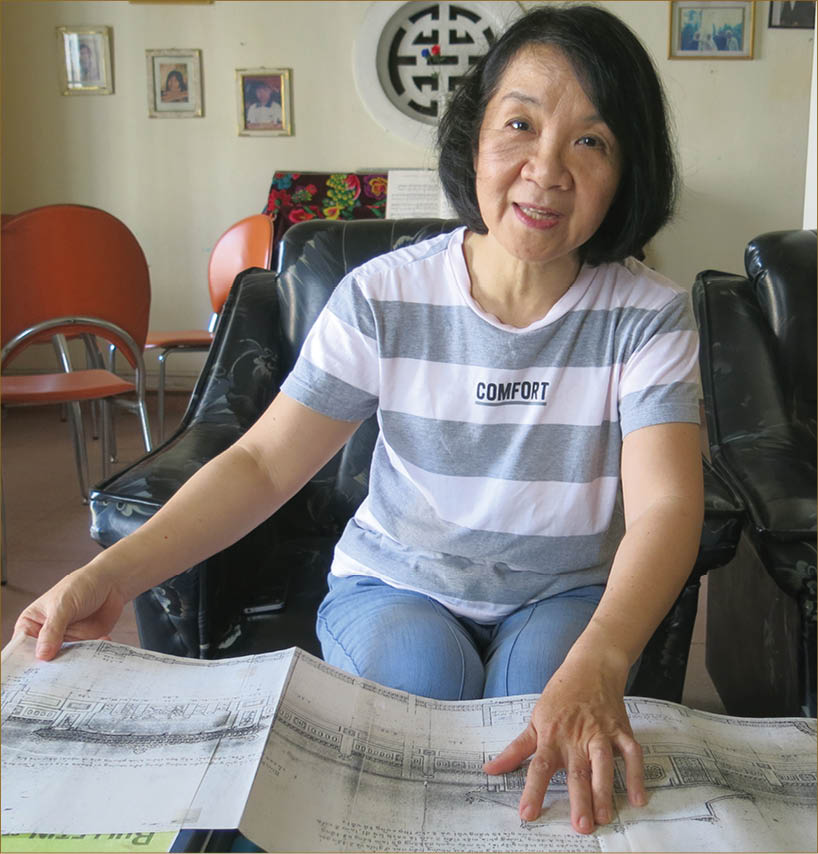
Artist Ton That Sa – the designer of the Memorial of the Deceased Warriors
Talent
As one of the descendants of Lord Nguyen Phuc Chu, Ton That Sa was born and brought up in Van Xuan village, Kim Long. He is specially gifted in art, for he has never had any formal training but self-study. He is meticulous and creative in everything he draws or paints. He is successful in many fields, such as illustration drawing, painting, stamp design or architectural design.
Apart from his teaching position at the college of technology and arts in the period of 1906 – 1941, Ton That Sa also contributed to scenography, illustration and design of ancient items and relics for reports on the Bulletin of Friends of Ancient Hue (BAVH – Bulletin des Amis du Vieux Hué). Not only was he skilled at architectural drawing, but he also had an eye for detail of several antiques, including ancient furniture, traditional instruments, parasols, lamps and light frames in Can Chanh Palace; decorative dragon patterns in Thai Hoa Palace; and patterns on royal costumes.
Ton That Sa’s drawings are of great significance in saving the images of Hue ancient works of art to help researchers study since many of these works no longer exist. Underlying in these drawings is his great respectful love for and awareness of preserving Hue culture and Hue ancient fine art, which is consonant with the principles of the BAVH during its 30 years of existence.
Assoc. Prof. Phan Thanh Binh, Rector of the College of Fine Art, Hue University, claimed that Ton That Sa’s art road appeared to come not only from his consciousness and qualities of an artist, but also from his innate love and true passion. His diligence gradually made him an art researcher rather than an art composer.
He was not noted as a creative artist, but his drawing attracted viewers by its inner charm. Many of his drawings are evidence of his talent, marvel, delicacy, insight and artistic techniques.
“Many paintings of architectural scenery have shown that Ton That Sa was a color painting master. The smoothness and slickness of colors and light ranked him at the level of a professional painter rather than an amateur.
Ton That Sa was known to the French and considered a real talent. He not only met the strict academic requirements of creativity in images reflecting the research and scenography, but he also integrated the sentiments towards the artistic values of Hue,” emphasized Assoc. Prof. Phan Thanh Binh.

Ms. Bui Oanh Hang, Ton That Sa’s granddaughter, recalled memories of her grandfather.
A desire for a Ton That Sa street
Ton That Sa was invited to design and restore the royal furniture and the royal costumes as well as precious antiques in Khai Dinh Museum (now known as Hue Museum of Royal Fine Art). Notably, Ton That Sa molded the statue of King Duy Tan.
In the 1920s, Ton That Sa was additionally known as a talented architect through his participation in design competitions, which is evident in his designs of the Memorial of the Deceased Warriors and the Quoc Hoc steeple. In 1925, his drawing series of Vietnamese peasants on the farm brought him the first prize in stamp drawing.
For his contributions to arts and his morale to boost the humanity of Hue culture in general and the Nguyen royal fine art, Ton That Sa was knighted in 1934. It was a special honor given by the monarchy that his contemporaries hardly had. Unfortunately, disastrous floods and wars damaged, partly or fully, many of his works.
In a small house on Phan Chau Trinh street, Hue, Ms. Bui Oanh Hang, artist Ton That Sa’s granddaughter, has still kept some of his precious documents and works. Looking back at his intact drawings, Ms. Oanh Hang talked about her devoted grandfather: “I lived with my grandparents in my childhood as my father died young. In my memory, my grandfather was silent, diligent and serious with work. He spent all day drawing and helped anyone who needed. He designed the house I’m living now.”
Having lived in Hue for almost a century with considerable contributions to Hue culture and art, Ton That Sa deserves popularity. Ms. Bui Oanh Hang said, “I hope that my grandfather’s contributions to art during his hard-working life will be recognized. A worthy award is probably a street named after him, so that he and his dedication will be remembered of by the passers-by.”
Assoc. Prof. Phan Thanh Binh stated that it would be worth having a street named after Ton That Sa in recognition of his contribution to Hue.
Story and photos: Minh Hien